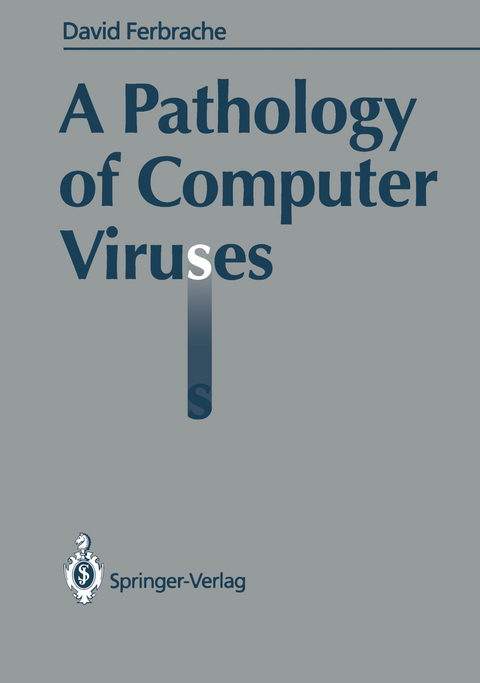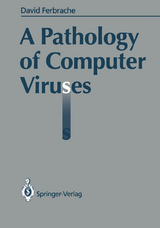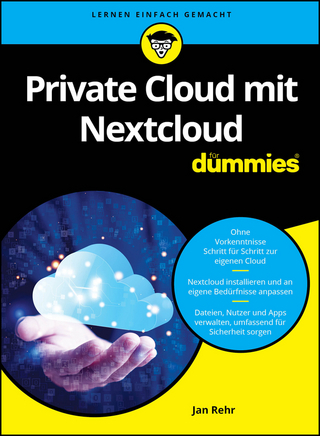A Pathology of Computer Viruses
Springer Berlin (Verlag)
978-3-540-19610-5 (ISBN)
1 Introduction.- 1.1 Preamble.- 1.2 What is a Computer Virus?.- 1.3 Worms: Networked Viruses.- 1.4 Terminology.- 2 Historical Perspectives.- 2.1 Introduction.- 2.2 1960s: Early Rabbits.- 2.3 1970s: Fiction and the Worm.- 2.4 1980-1983: Genesis.- 2.5 1984-1986: Exodus.- 2.6 1987: Mac, Atari and Amiga Next.- 2.7 1988: Proliferation and Disbelief.- 2.8 1989: Reaction by the Community.- 2.9 1990: Organisation and Litigation.- 2.10 Summary.- 3 Theory of Viruses.- 3.1 Introduction.- 3.2 Addition of Viral Code.- 3.3 Detection of Viruses.- 3.4 Classes of Viruses.- 3.5 Thompson: and Trusting Trust.- 3.6 Biological Analogies.- 3.7 Quest for Life.- 3.8 Evolution: Genetic Algorithms.- 4 Operation of PC Viruses.- 4.1 Introduction.- 4.2 PC Boot Sequence: Initialisation.- 4.3 BIOS and DOS.- 4.4 Master Boot Record.- 4.5 DOS Boot Sector.- 4.6 System Initialisation.- 4.7 Batch Processing Viruses.- 4.8 COM and EXE Viruses.- 4.9 Resident and Transient Viruses.- 4.10 Manipulation by Viral Code.- 4.11 Activation Criteria.- 4.12 Camouflage.- 4.13 Replication.- 5 Management of PC Viruses.- 5.1 Perspective on Security.- 5.2 Components of a Virus Control Scheme.- 5.3 Prevention of Virus Attack.- 5.4 Detection of Viral Code.- 5.5 Containment of Viral Code.- 5.6 Recovery from Viral Infection.- 5.7 Contingency Planning.- 5.8 Remedial Action.- 6 Apple Macintosh Viruses.- 6.1 Introduction.- 6.2 Macintosh: The Abstract Operating System.- 7 Mainframe Systems: The Growing Threat.- 7.1 Introduction.- 7.2 Hardware Architectures.- 7.3 Software Architecture.- 7.4 UNIX: A Viral Risk Assessment.- 8 Network Viruses: The Worms.- 8.1 Introduction.- 8.2 Standardisation.- 8.3 History of Network Pests.- 8.4 Internet Protocols.- 8.5 OSI: Security in the Making.- 8.6 DECNET: Insecurity Through Default.- 9Reactions of the IT Community.- 9.1 Discussion and Advice.- 9.2 Legislative Issues.- 9.3 Professionalism and Software Development.- 10 Conclusions: The Future Ahead.- Appendices.- 1 DOS Filestore Structure.- 1.1 Introduction.- 1.2 Master Boot Record.- 1.3 DOS Boot Sector.- 1.4 File Allocation Table.- 1.5 Root Directory.- 2 Low Level Disk Layout.- 3 EXE File Format.- 4 Mac Filestore Structure.- 5 PC Virus Relationship Chart.- 6 Macintosh Virus Relationship Chart.- 7 PC Boot Sequence.- 8 AIDS Trojan: Accompanying Licence.- 9 Software Infected at Source.- 10 Nomenclature.- 10.1 Types of Virus.- 10.1.1 Master Boot Sector Viruses.- 10.1.2 DOS Boot Sector Viruses.- 10.1.3 Executable COM/EXE Viruses.- 10.1.4 Memory Resident Viruses.- 10.1.5 Overwriting Viruses.- 10.1.6 Prepending Viruses.- 10.1.7 Appending Viruses.- 10.2 Generations of Virus.- 10.3 Classes of Anti-virus Product.- 11 UNIX Boot Sequence.- 12 CERT Press Release.- 13 CERT/CIAC Advisories.- 14 Contact Points.- 15 Abbreviations.- 16 Further Reading.- 17 Virus-1 Archive Sites.- 18 Relative Frequencies of IBM Viruses.
| Erscheint lt. Verlag | 11.11.1991 |
|---|---|
| Zusatzinfo | XIV, 306 p. |
| Verlagsort | London |
| Sprache | englisch |
| Maße | 170 x 242 mm |
| Gewicht | 490 g |
| Themenwelt | Mathematik / Informatik ► Informatik ► Betriebssysteme / Server |
| Mathematik / Informatik ► Informatik ► Software Entwicklung | |
| Schlagworte | algorithms • Batch processing • Computer Security • Computer-Viren • Computer virus • Development • DOS • Integrity • operating system • security • Software • software architecture • software development • UNIX • verification |
| ISBN-10 | 3-540-19610-2 / 3540196102 |
| ISBN-13 | 978-3-540-19610-5 / 9783540196105 |
| Zustand | Neuware |
| Haben Sie eine Frage zum Produkt? |
aus dem Bereich




